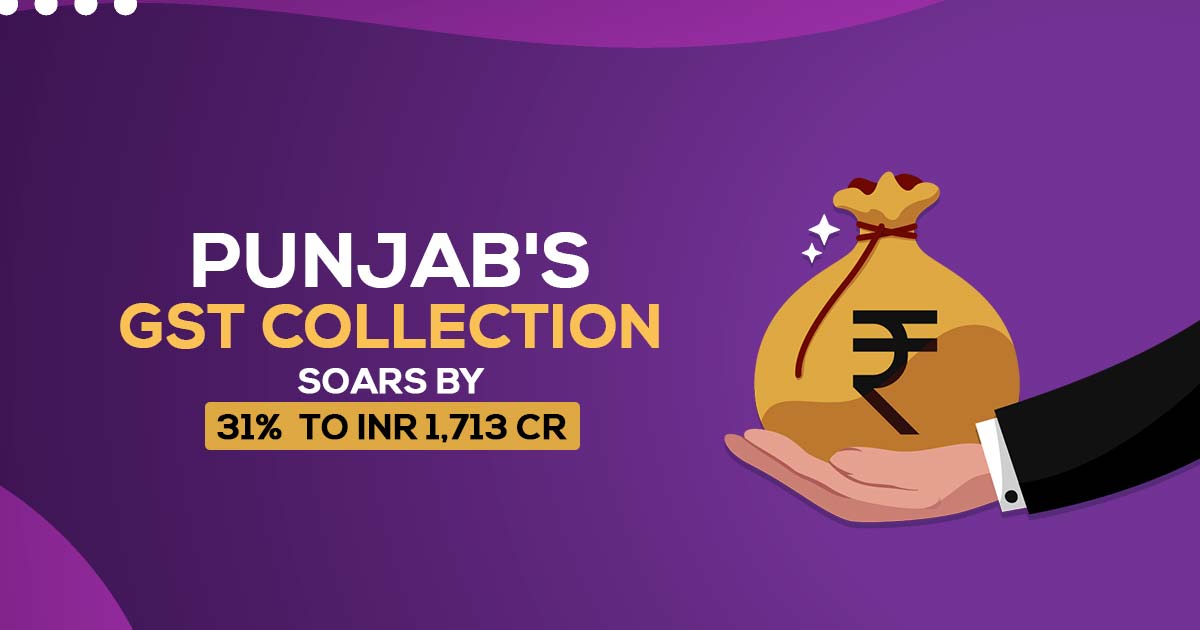
In August 2023, Punjab’s GST collection saw a significant 31% year-on-year increase, attributed to robust business growth and improved monitoring to plug revenue losses.
The total GST revenue, including SGST and IGST, for that month reached ₹1,713.41 crore, up from ₹1,306.88 crore in the same month of the previous fiscal year 2022-23, as per the indirect tax data gathered by the state taxation department. This 31% growth in Punjab’s collection outpaced the national increase of 11% in GST revenue during the same month.
During the April-August period of the current year, GST revenue collection in Punjab was 28.20% higher compared to the same period last year, reaching ₹8,524.17 crore from ₹6,648.49 crore. Finance and Taxation Minister Harpal Singh Cheema expressed confidence that this performance indicates progress toward achieving the revenue target set in the budget for the current fiscal year.
He added that the improvement in tax compliance is attributed to enhanced monitoring, stricter checks to prevent revenue leaks, and the introduction of advanced software and technology for digital tax administration. With the upcoming festival season, further growth in GST collection is expected. In the FY 2023-24 budget, the finance minister set a target of ₹23,000 crore for GST collection in Punjab, a 26% increase over the previous year’s actual receipt of ₹18,128 crore. GST amounted significantly to the state’s own tax revenue (OTR), accounting for nearly 44% in the previous year.
Additionally, state excise revenue which is another major source of collection, increased by 7.69% in the April-August period, reaching ₹3,800 crore this year from ₹3528.92 crore in the same period of FY 2022-23. Primarily driven by a hike in VAT rates by Punjab and Himachal Pradesh. However, there was an 8% decline in year-on-year revenue in August, due to floods in certain districts of the state.
Read also: GST vs VAT: Simple Way to Describe the Differences
Meanwhile, VAT collection reported a 15.63% year-on-year increase in August after a slow start in the beginning, due to the increased VAT rates and the narrowing gap in fuel prices between states. The state government primarily relies on diesel and petrol for approximately 90% of its VAT revenue, while the remaining 10% is generated from aviation turbine fuel and liquor sales.
Mera Bill App Data Showed Irregularities
Furthermore, the ‘mera bill’ app, launched by the state government as part of the ‘bill liao inaam pao’ scheme, randomly reviewed 50 bills which revealed irregularities in bills issued by both registered and unregistered dealers. The scheme aims to boost GST compliance and revenue. Out of 50 bills randomly checked, 11 were from unregistered dealers, and the remaining 39 were from registered dealers.
Of these 33 were in order whereas six were not issued correctly according to the law. In the case of a dealer whose registration was cancelled in 2020 was issued bills. Further Cheema added that the budget announced through the scheme is aimed at enhancing compliance under GST and therefore, increasing the collection. More than 26,681 individuals have downloaded the app and 5,465 bills have been uploaded by them till Monday evening. The state launched the app just two weeks ago.